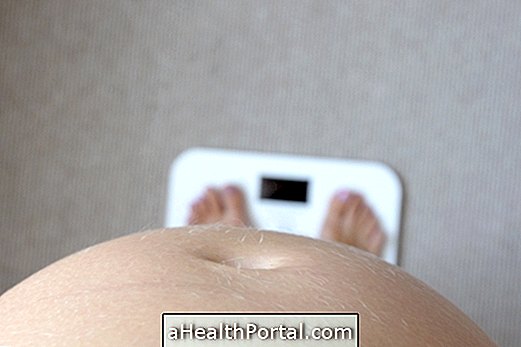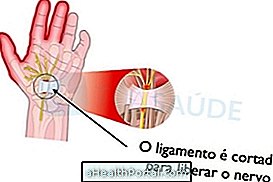Nuchal translucency is an examination used to measure the amount of fluid in the region of the nape of the fetus made during the ultrasound, performed between the 11th and the 14th week of gestation. This test is used to calculate the risk of the baby presenting with any malformation or syndrome, such as Down syndrome.
When malformations or genetic diseases are present, the fetus tends to accumulate fluid in the nape of the neck, so if the measure of nuchal translucency is increased, above 2.5 mm, it means that there may be some change in its development.

Thus, the measurement of altered nuchal translucency does not confirm that the baby has a genetic disease or malformation, indicating only the increased risk of these changes, and in this case the obstetrician will require other tests such as amniocentesis, for example to confirm or not diagnosis.
Price of nuchal translucency
The price of the exam varies from 110 to 400 reais, depending on the clinic where it is performed, but if requested by the obstetrician, in the prenatal consultations, can be done by the SUS without being charged.
How it is done and reference values
Nuchal translucency is done during one of the prenatal ultrasound, and the doctor presently measures the size and amount of fluid that is in the region behind the baby's neck, without any other special procedure being required.
The values of the nuchal translucency can be:
- Normal : less than 2.5 mm
- Change : equal to or greater than 2, 5 mm
An increased value test does not guarantee that the baby suffers from any change, but indicates that there is a greater risk, and therefore the obstetrician will require other tests, such as an amniocentesis, which collects a sample of the aminiotic fluid, or cordocentesis, which evaluates a umbilical cord blood sample. Learn more about how aminiocentesis or cordocentesis is done.
If, during ultrasonography, the absence of the nasal bone is also present, the risk of some malformation increases, since the nasal bone is usually absent in cases of syndromes.
In addition to nuchal translucency, the mother's age and family history of chromosomal abnormalities or genetic diseases are also important in calculating the risk of the baby having one of these changes.
When to do the nuchal translucency
This examination should be done between the 11th to the 14th week of gestation, since it is when the fetus is between 45 and 84 mm in length and it is possible to calculate the measure of nuchal translucency.
It may also be known with first trimester morphological ultrasound because it, in addition to measuring the baby's neck, also helps to identify malformations in the bones, heart, and blood vessels.
Learn more about the other tests that are needed in the first trimester of pregnancy.



























